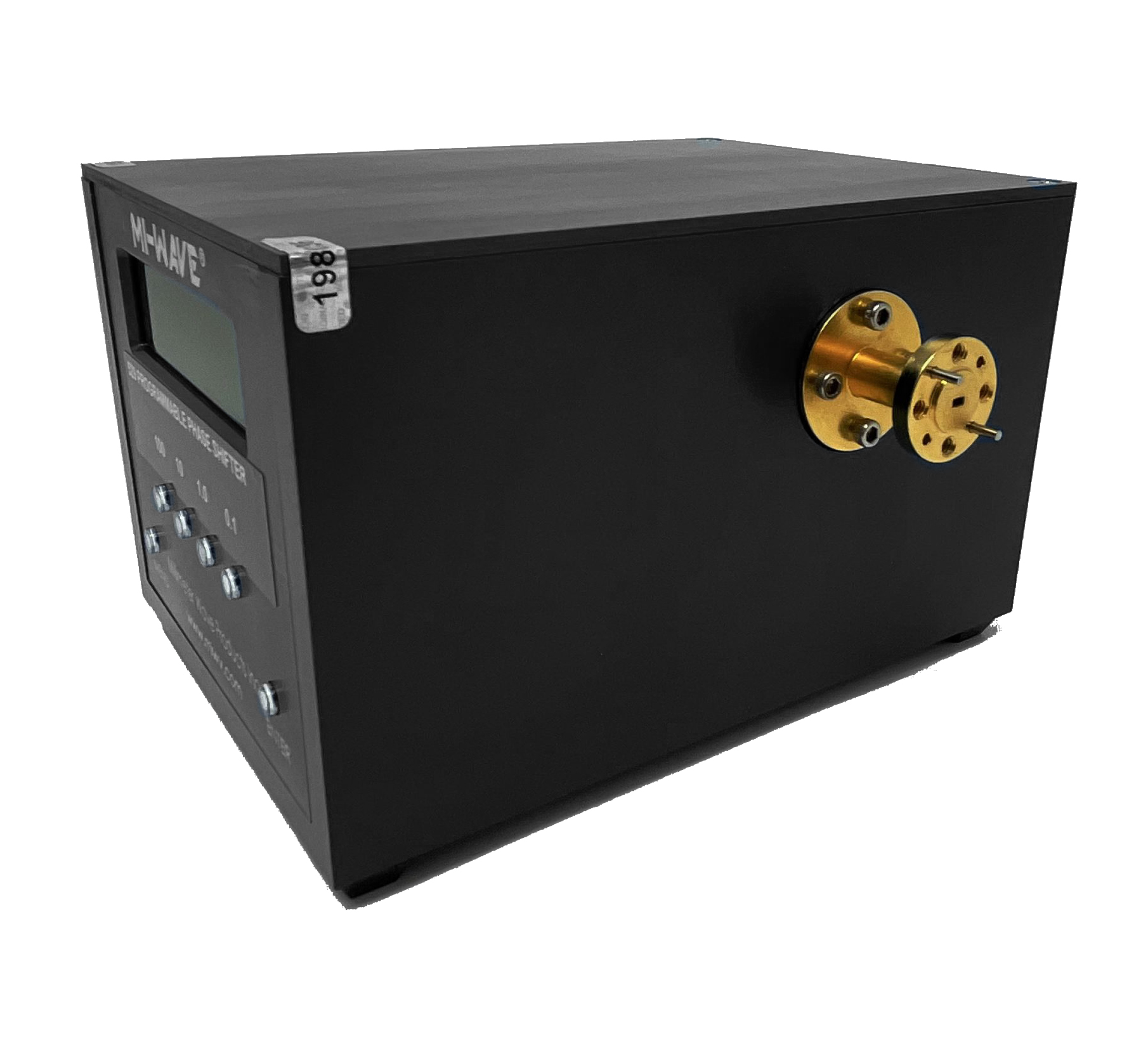Description:
Mi-Wave has developed a new motorized rotary vane phase shifter which is available in W/G bands from 18.0 to 170 GHz. The 529 Series is a computer-controlled version of Mi-Waves’ standard direct reading phase shifter and features a 0º to 360º range with 0.5-degree resolution. IEEE-488 & USB available.
The phase shifter is controlled by a precision stepping motor and all electronics required to drive the motor are contained within the phase shifter housing. Custom microprocessor-based electronics translate the desired phase shifter setting into the required motor position and provide the proper drive signals for the motor.
Features
• Full Waveguide Bands
• High Accuracy
• Low Insertion Loss
• Computer Controlled
• Precision Construction
• High Reliability
• Inline Configuration
Applications
• 5G Systems
• RF automated Measurement Systems
• Measure Bridge Circuits & Phased Arrays
• Test Set
• Radar & Astronomy Systems
• Test Equipment & Labs
• Sub-Assemblies
*All data presented is collected from a sample lot.
* Actual data may vary unit to unit, slightly.
*All testing was performed under +25 °C case temperature.
*Consult factory to confirm if material, plating, size, shape, orientation and any electrical parameter is critical for the application as website information is for reference only.
*Millimeter Wave Products, Inc. reserves the right to change the information presented on website without notice as we continue to enhance the performance and design of our products.
Motorized Adjustable Rotary Vane Phase Shifter
The 529 Series Motorized Direct-reading Phase Shifters are used in all RF automated measurement systems. They are most frequently used in RF substitution type set-ups for precise measurement of characteristics including bridge circuits and phased arrays.
Motor speed is ramped up and down ensuring accurate positioning and smooth operation. The unit can be controlled remotely through an IEEE-488 interface or manually with a front panel switch. A three-digit readout on the front panel displays the setting. All that is required is a 24 volt, 500 mA supply,
which is included.





